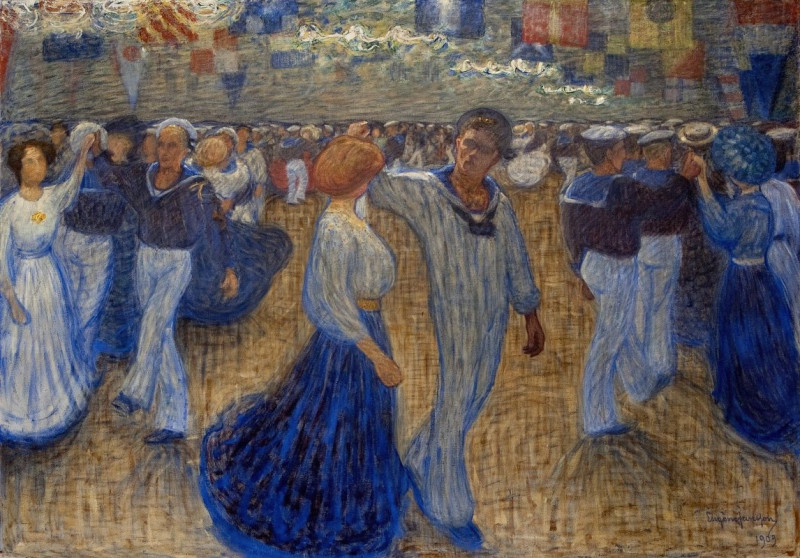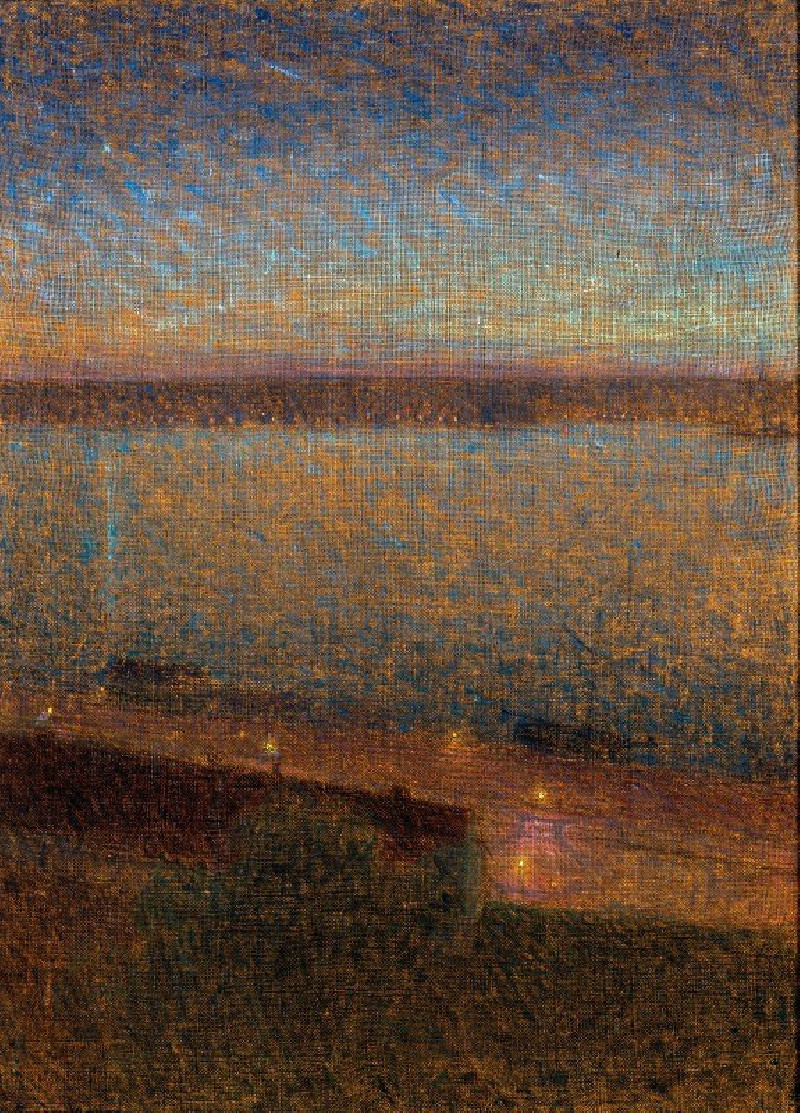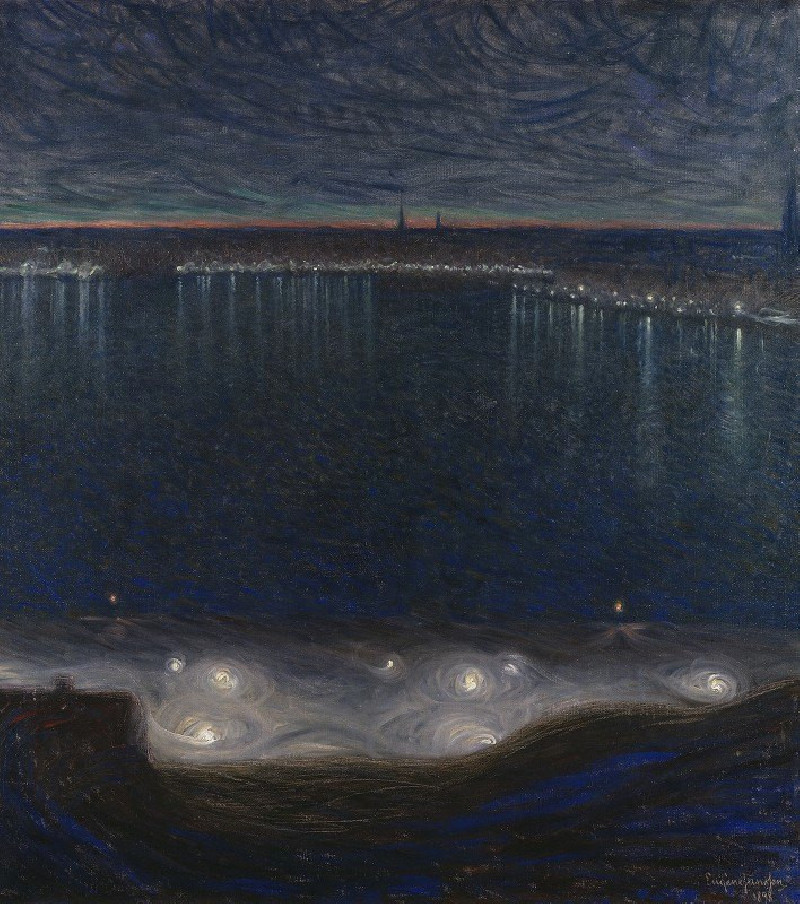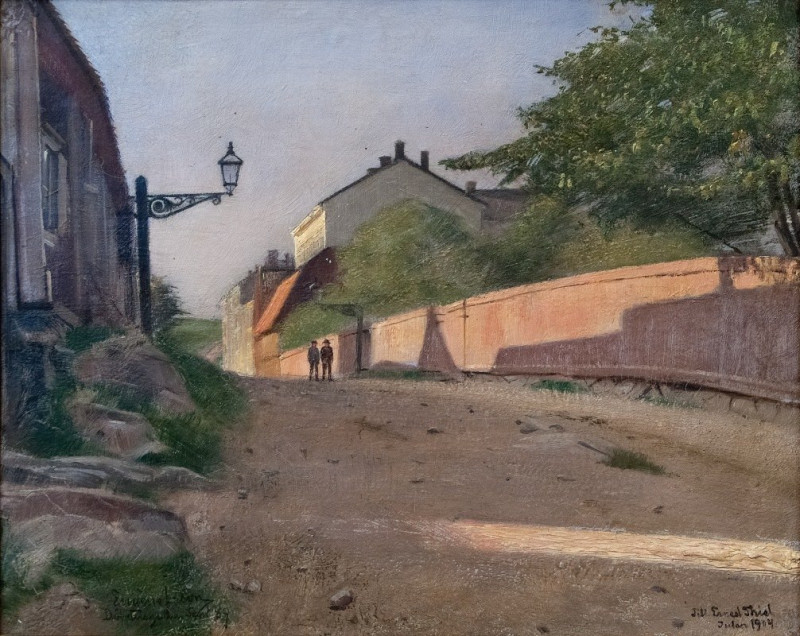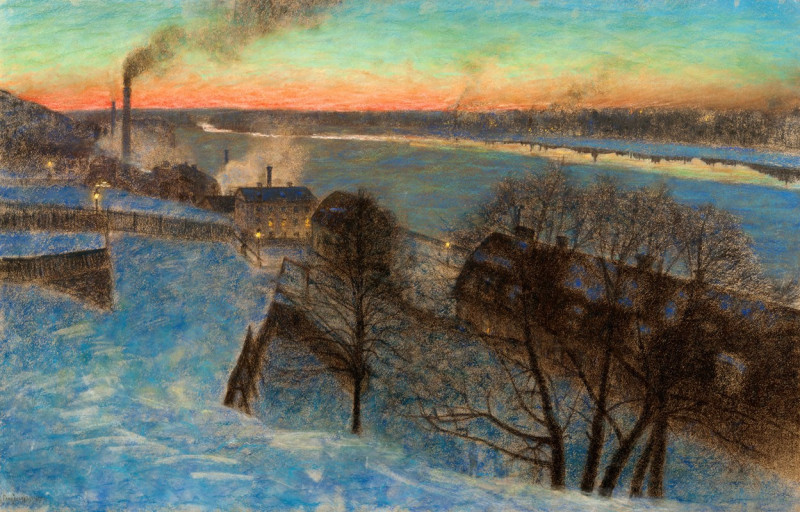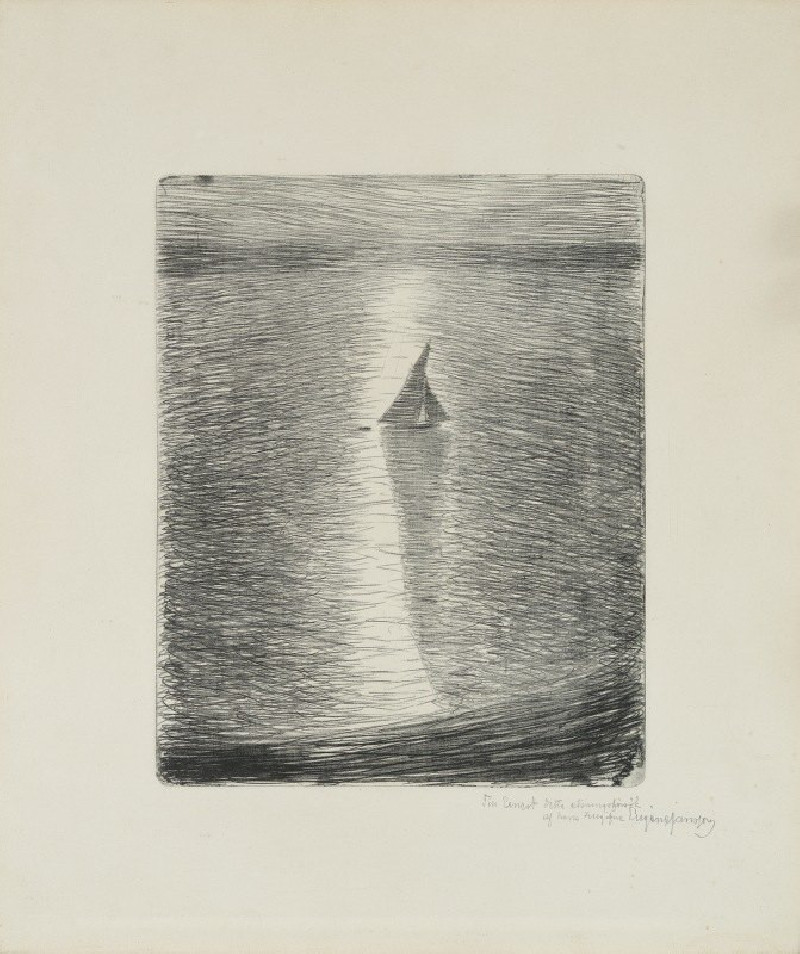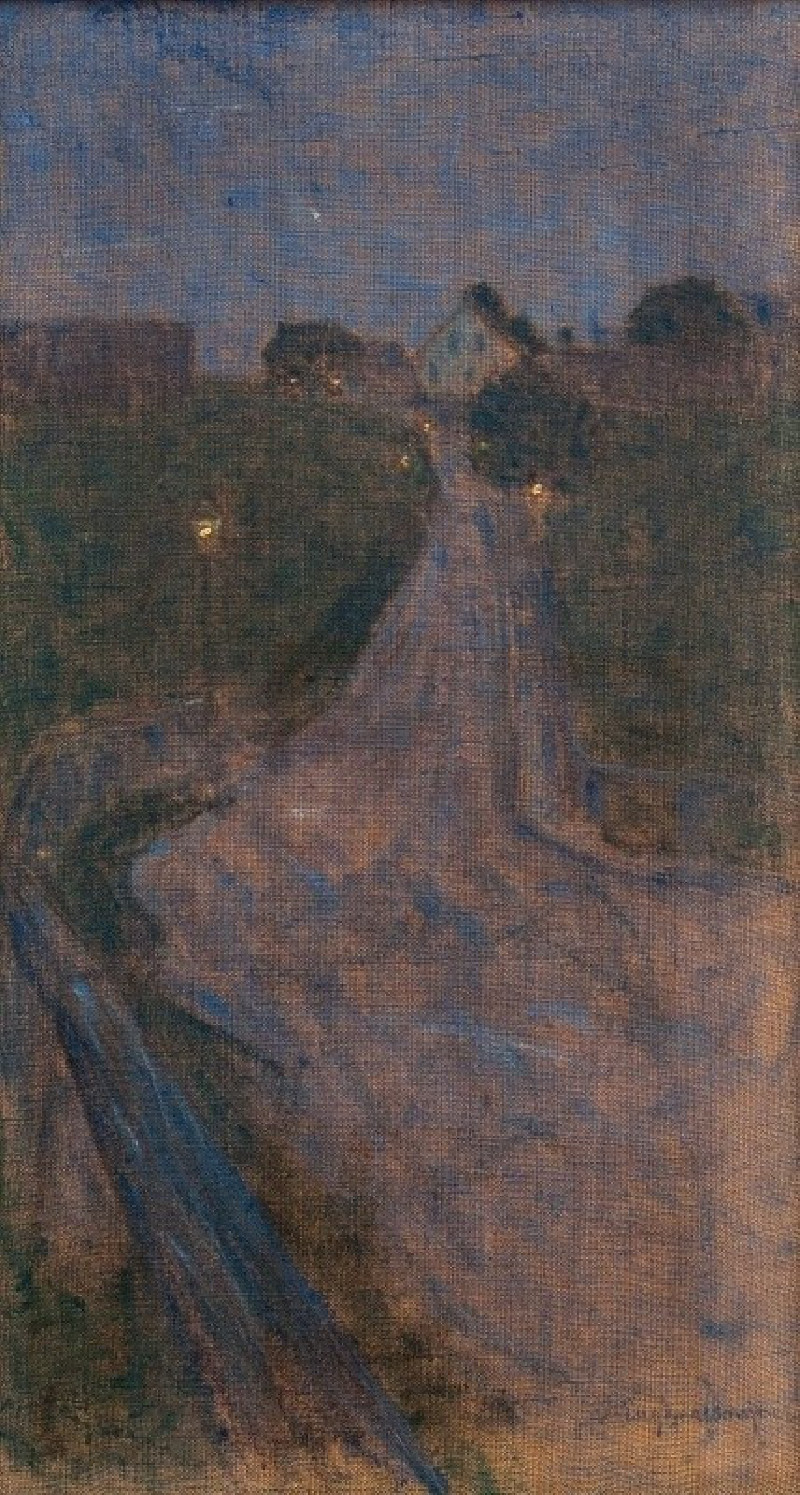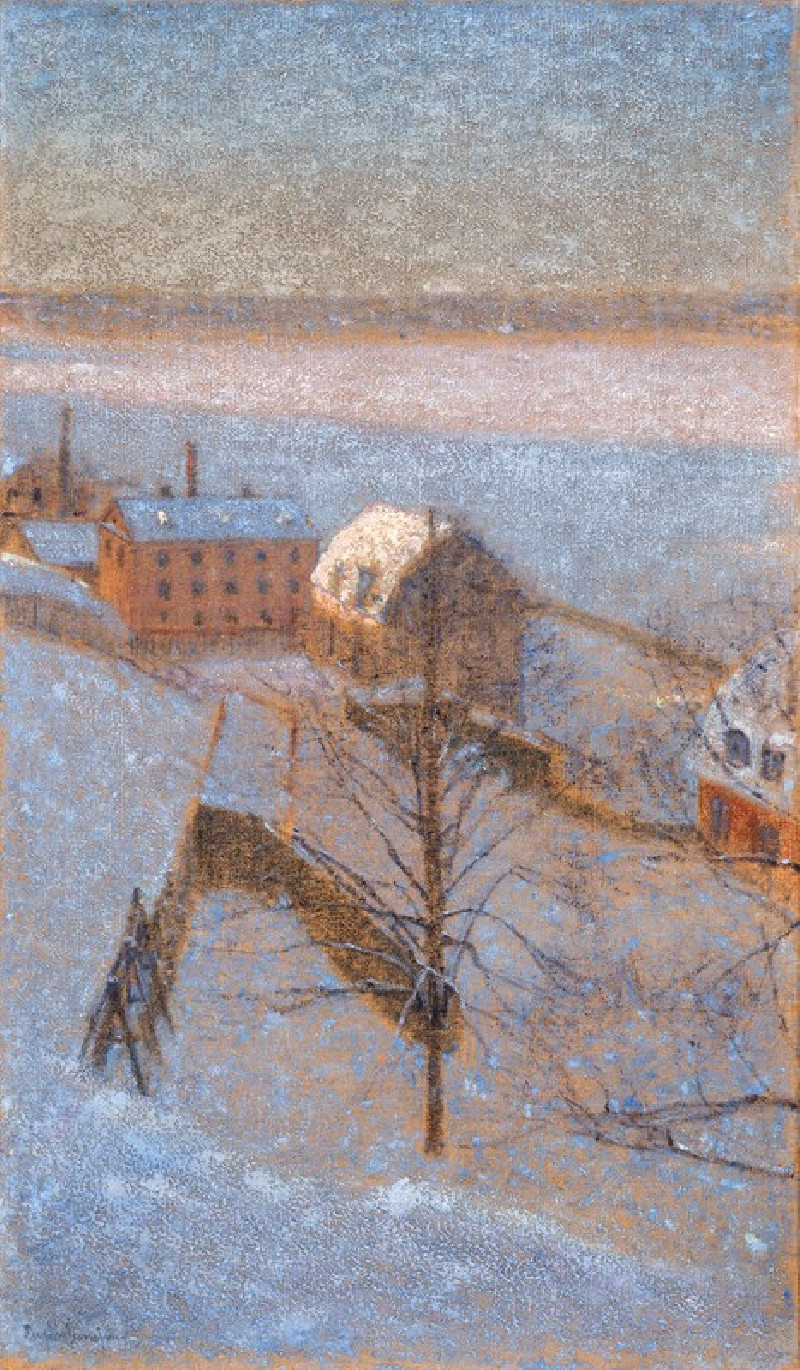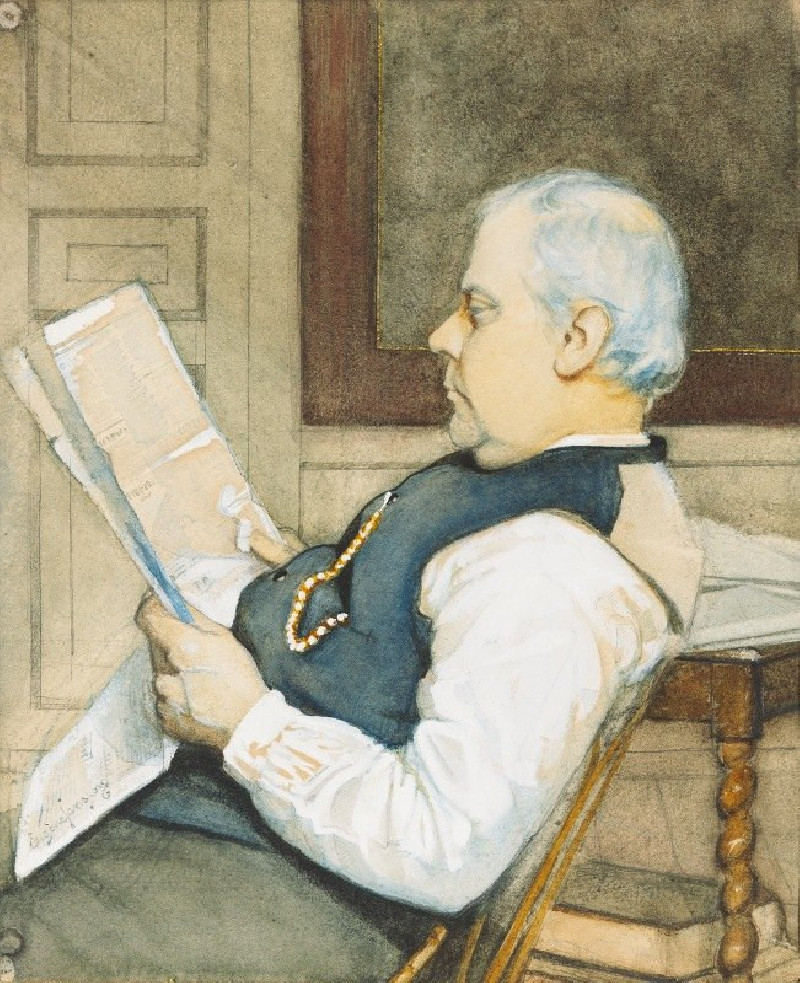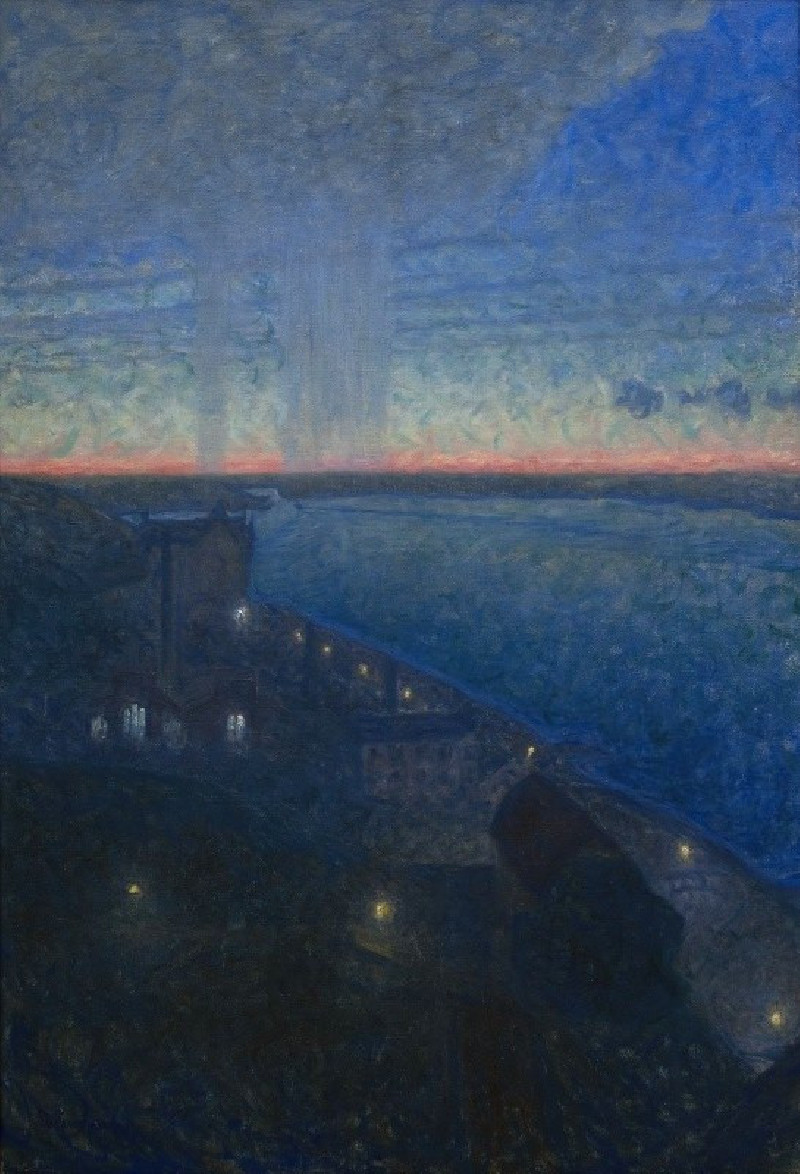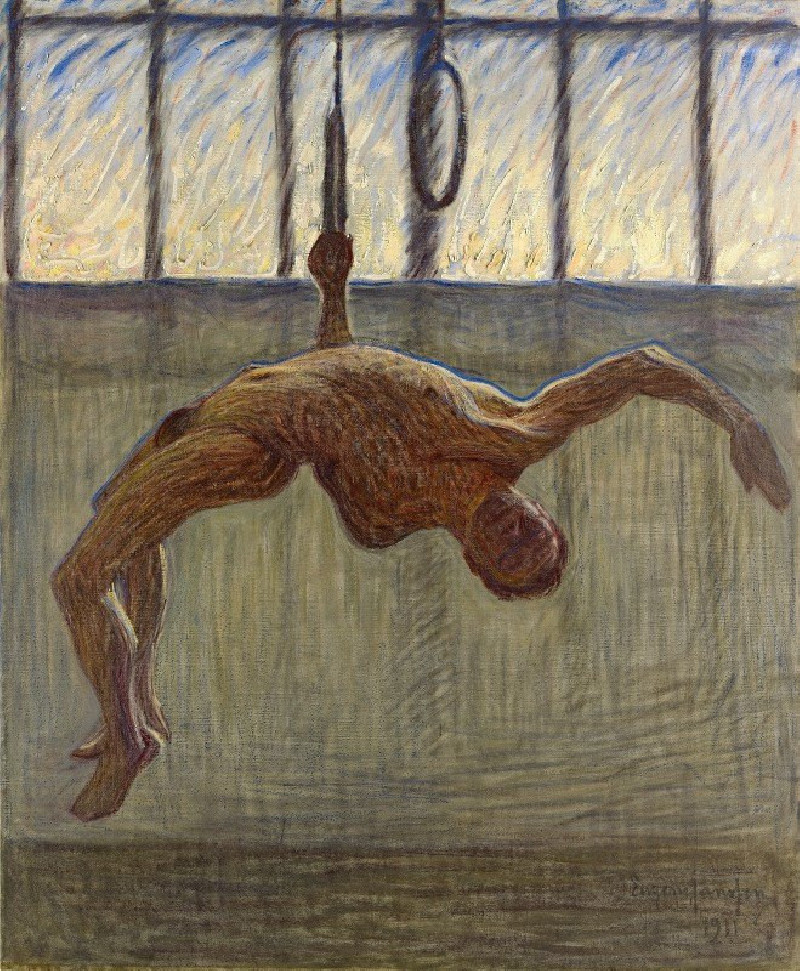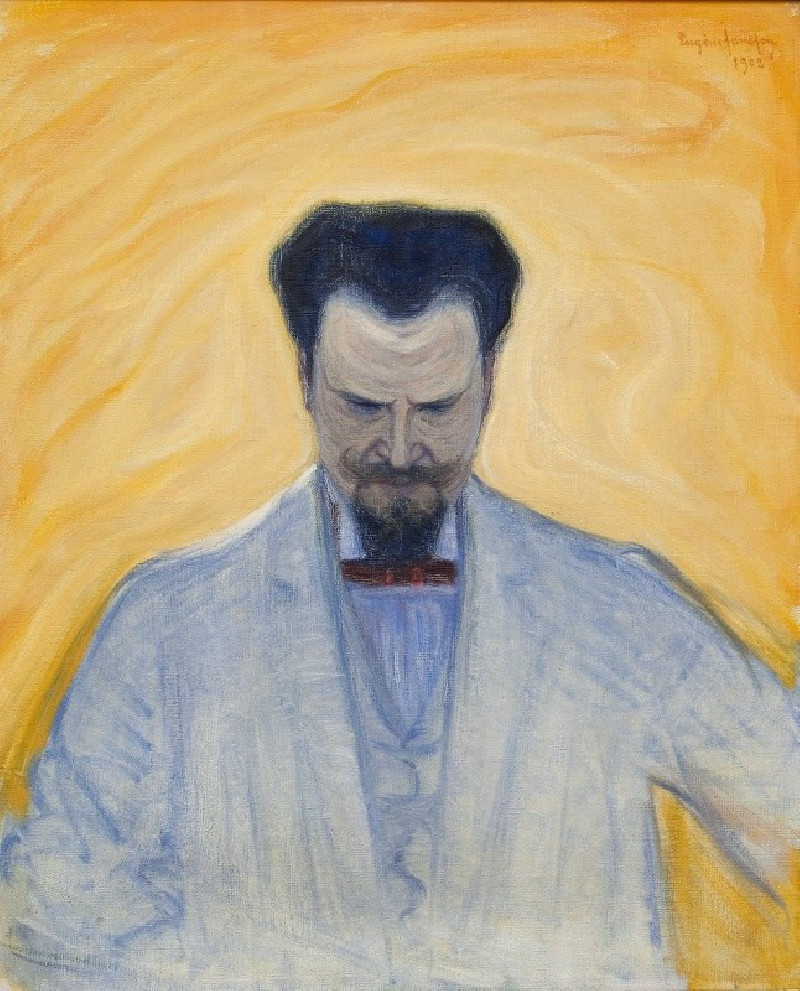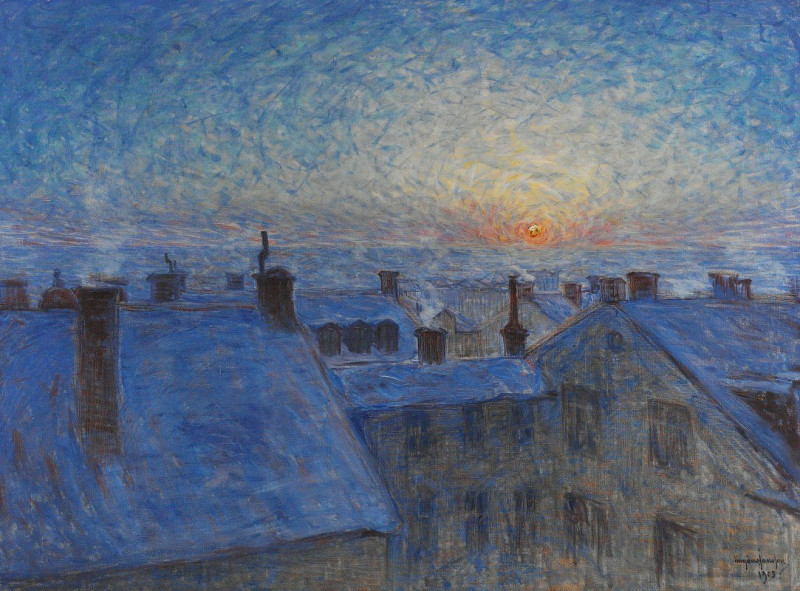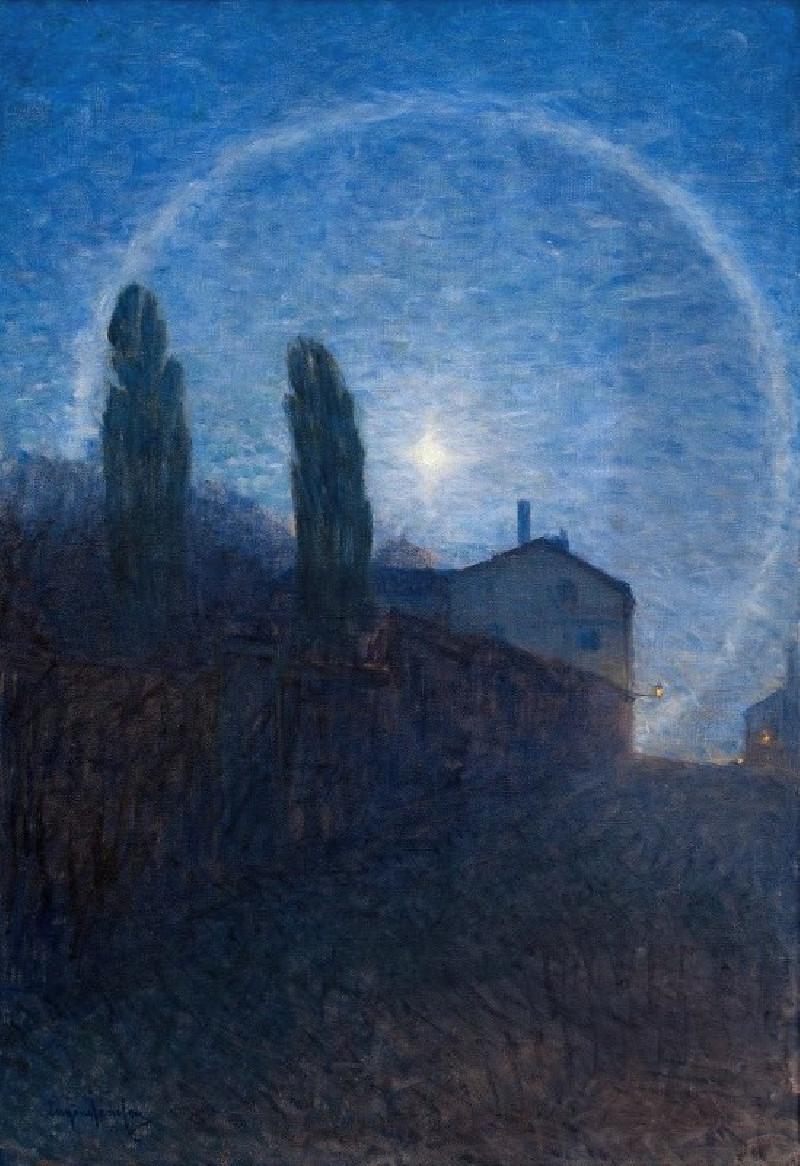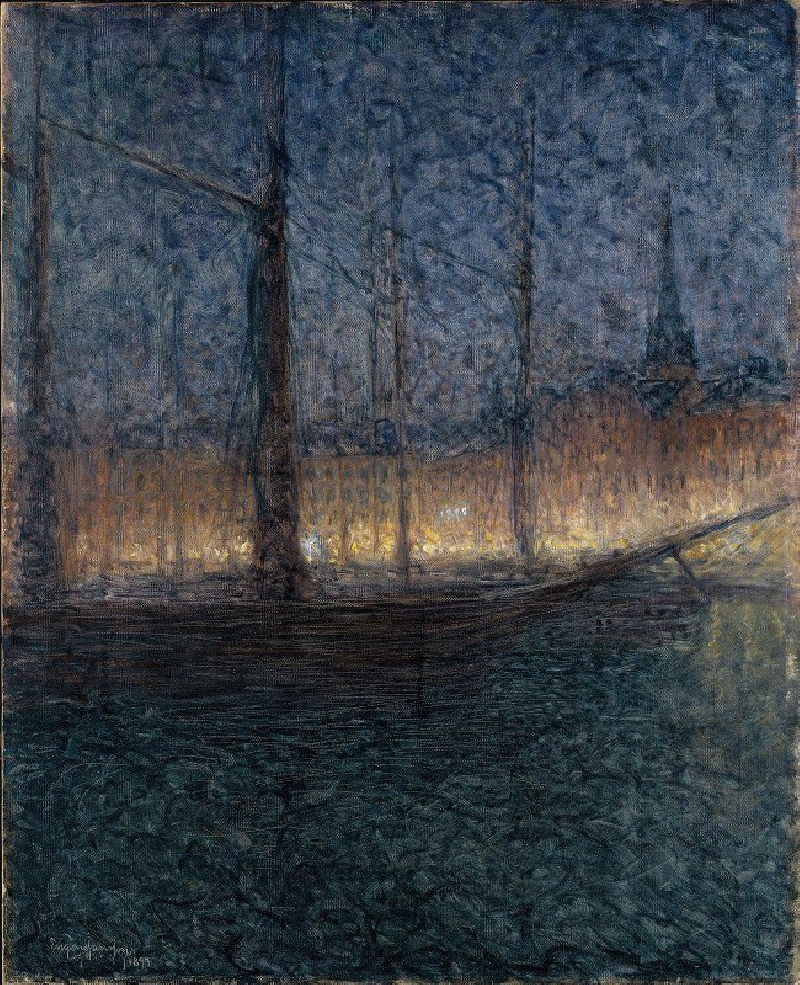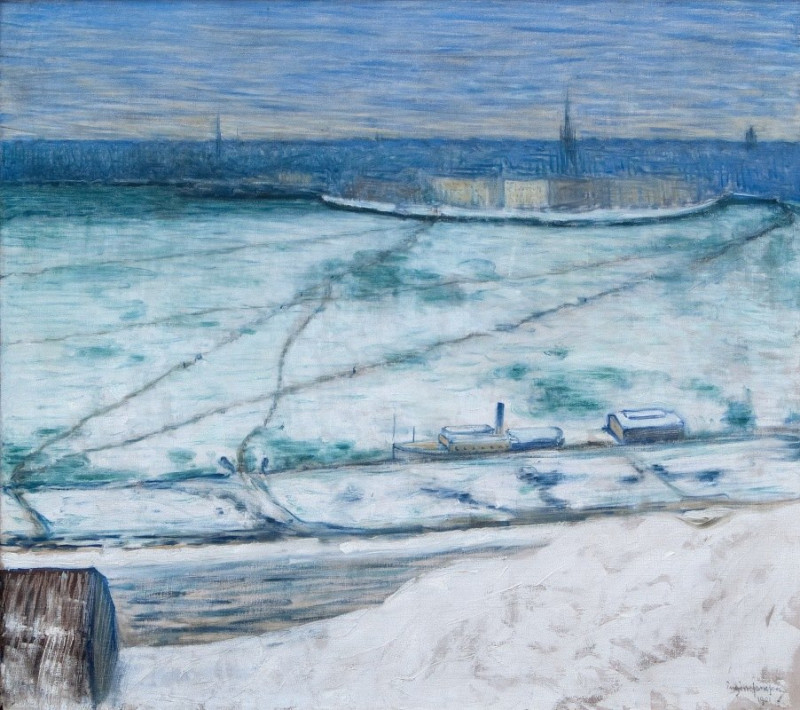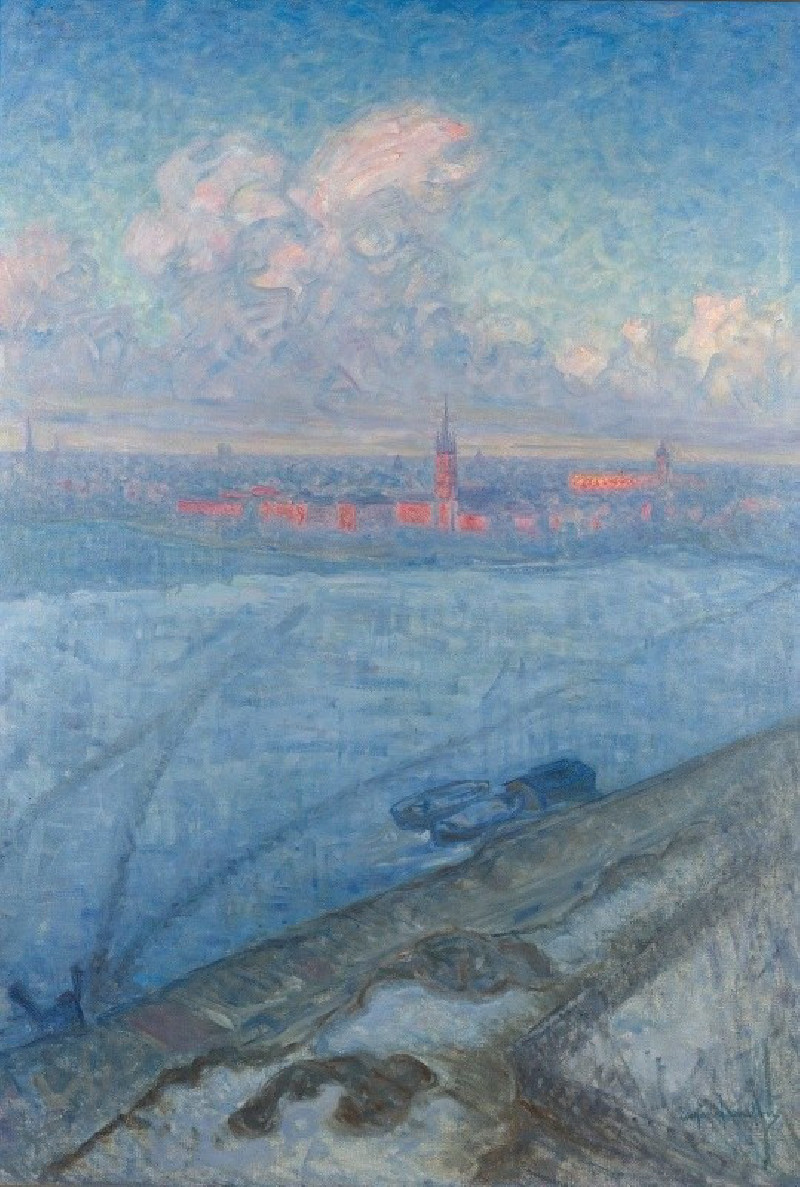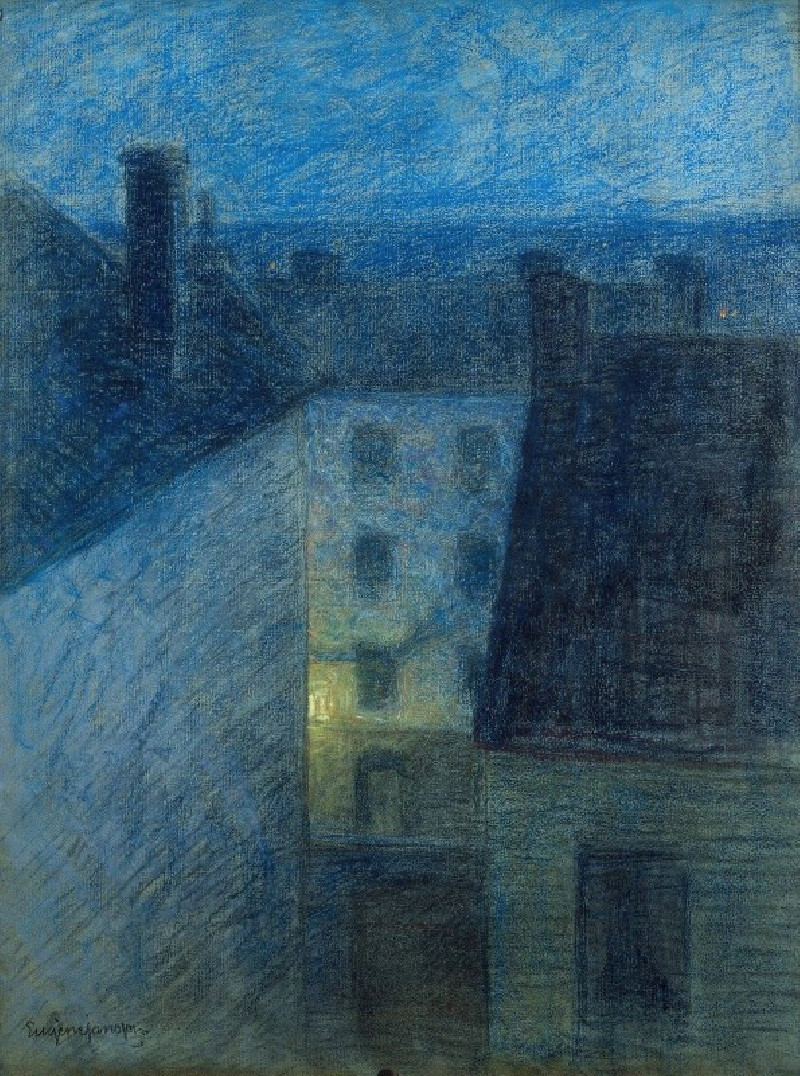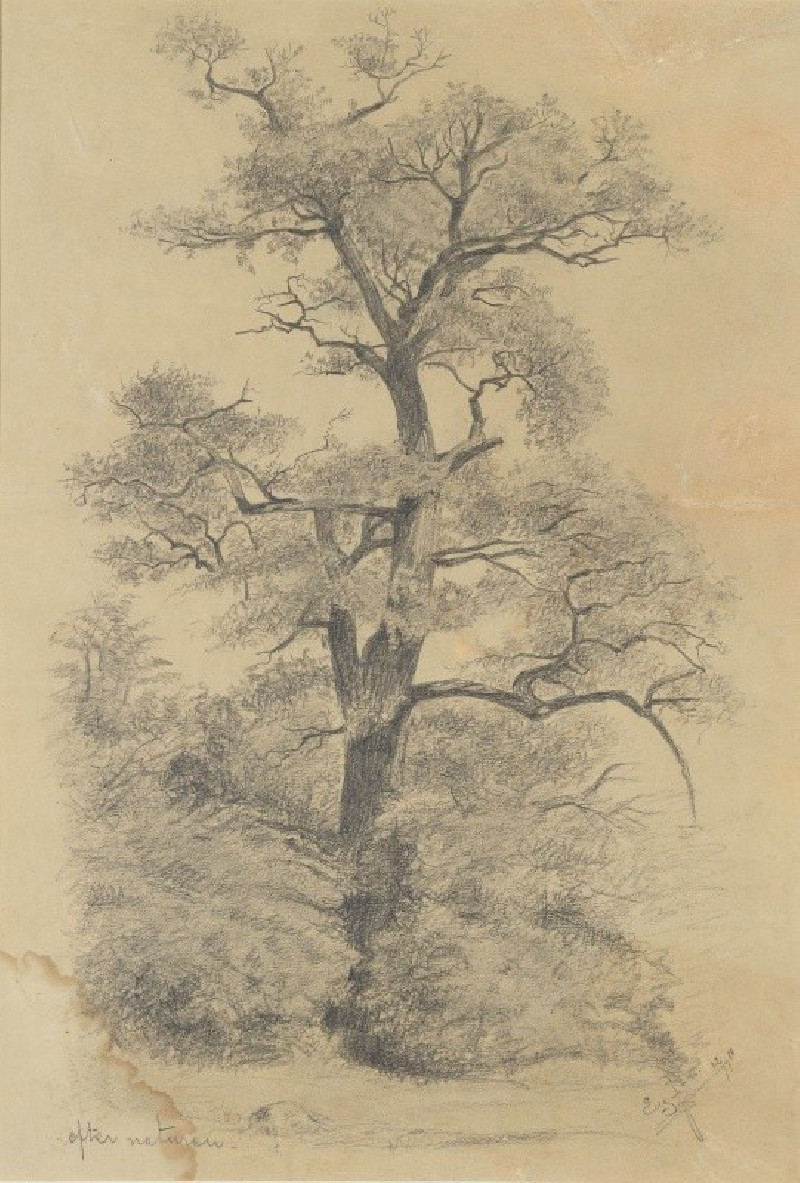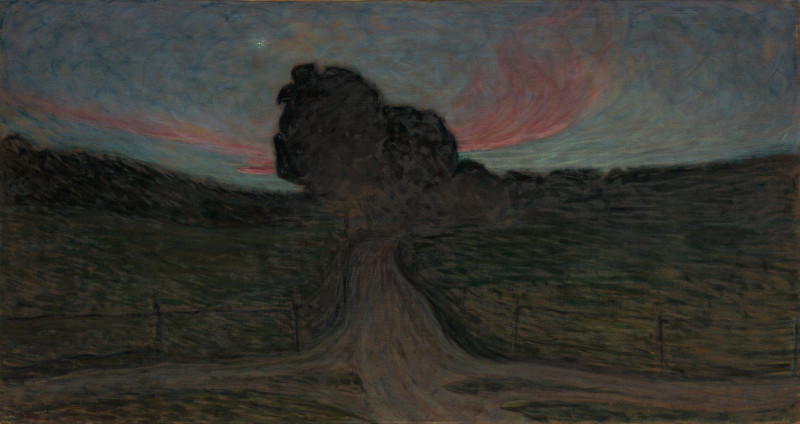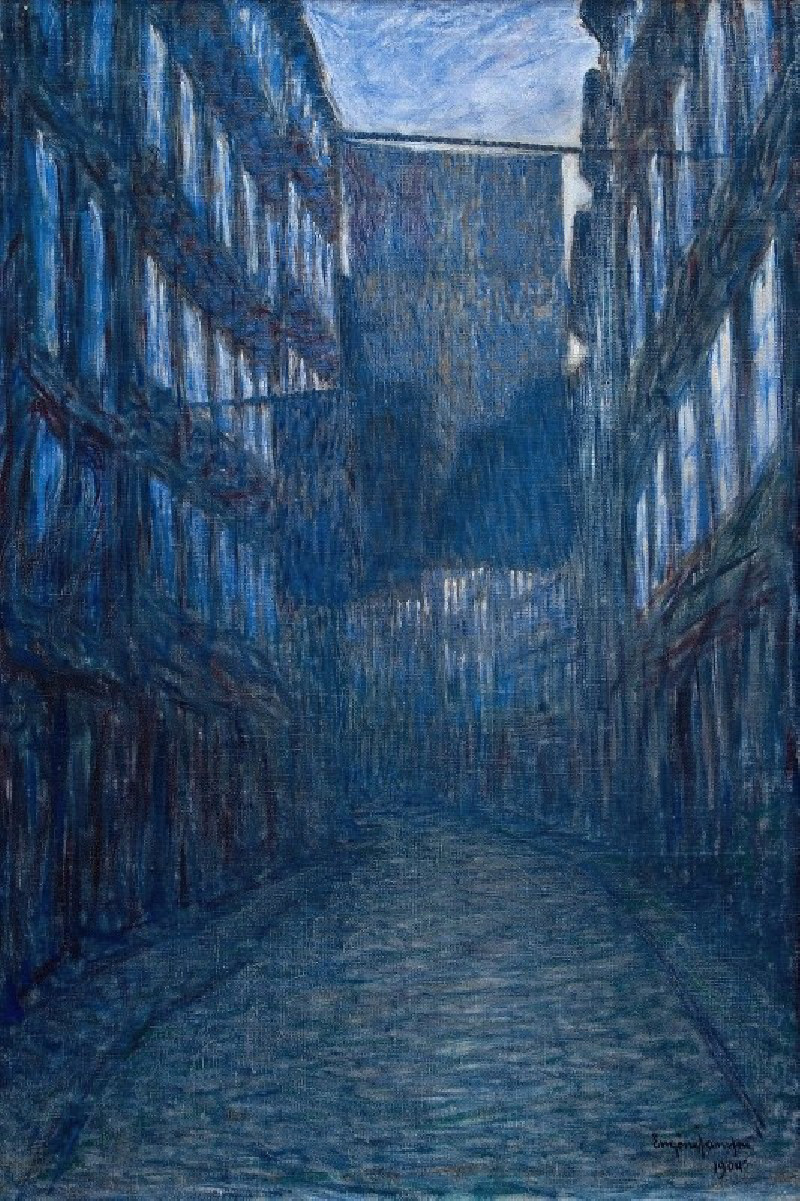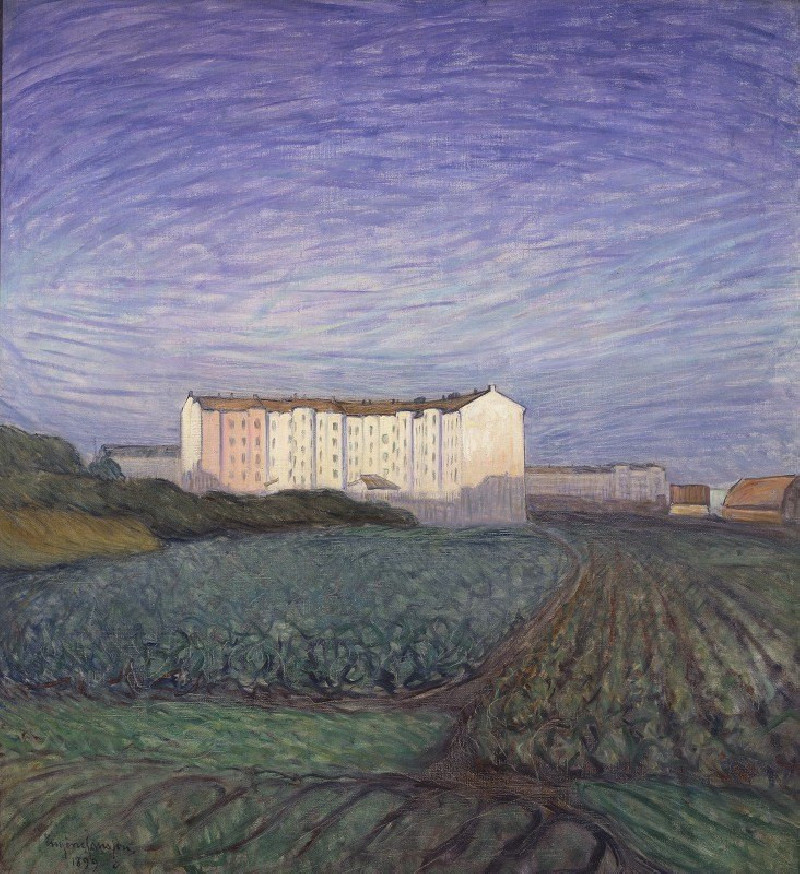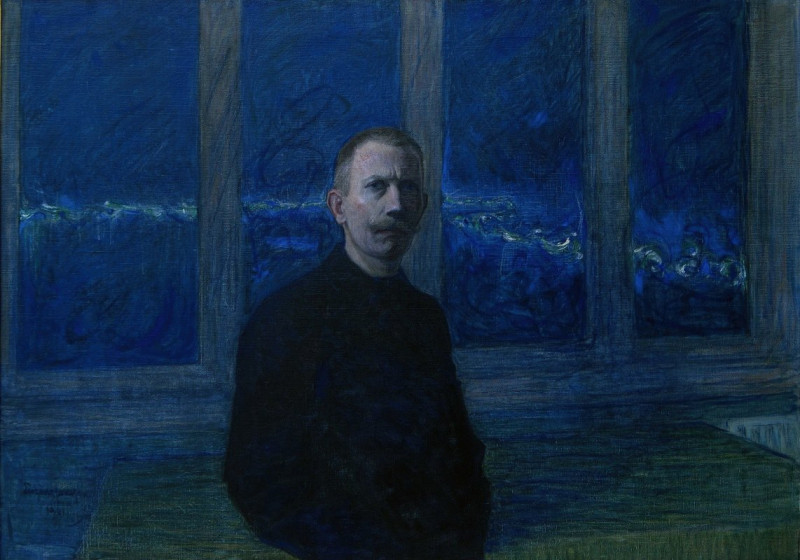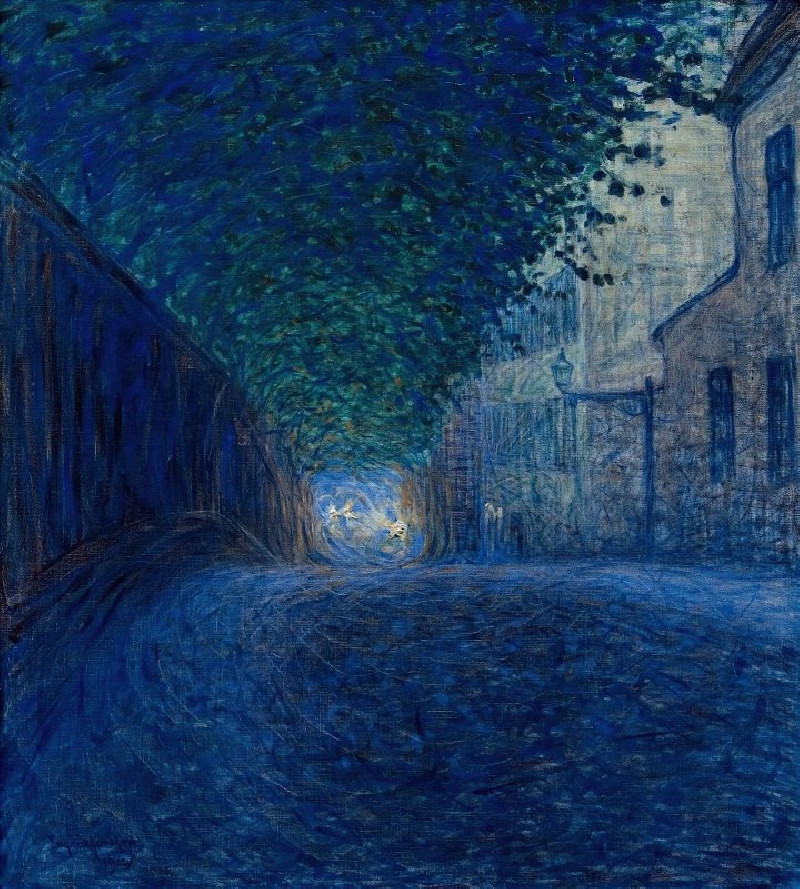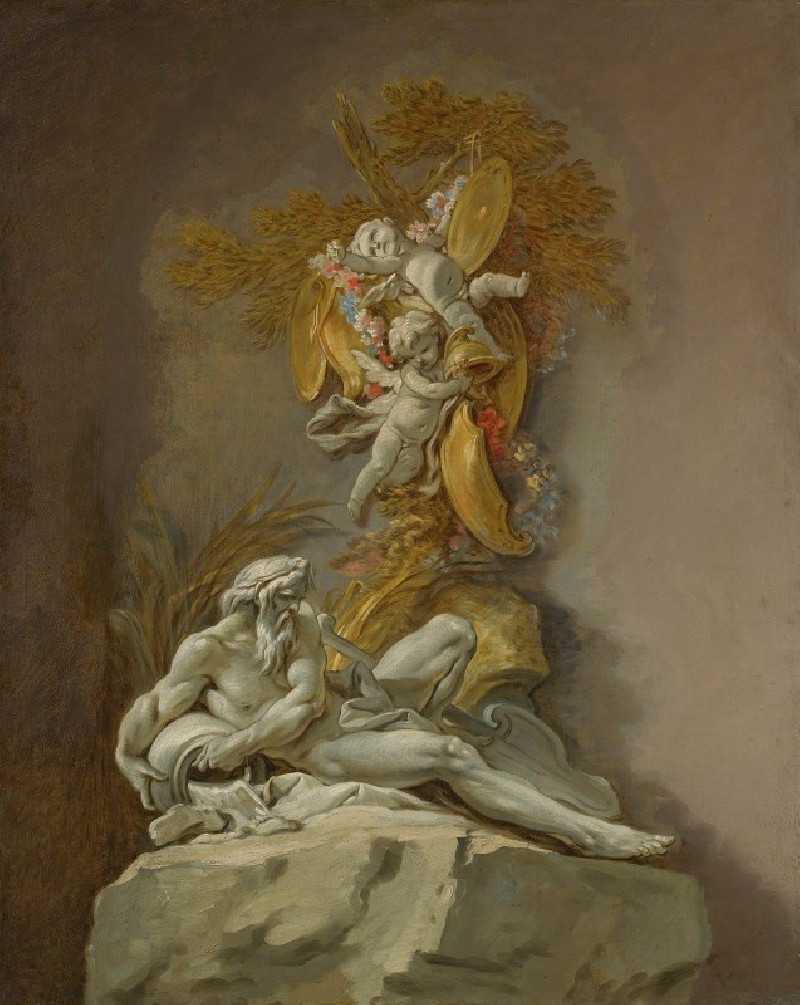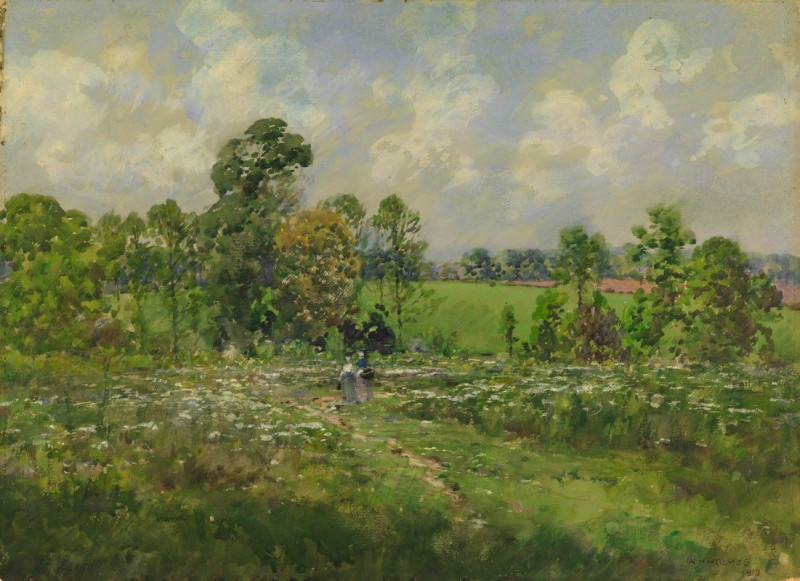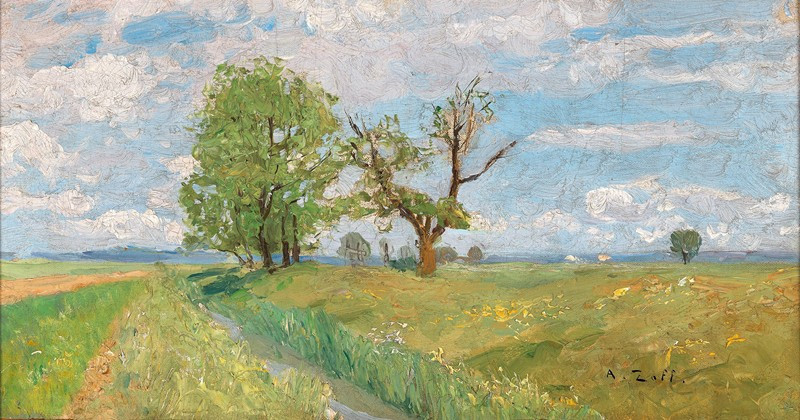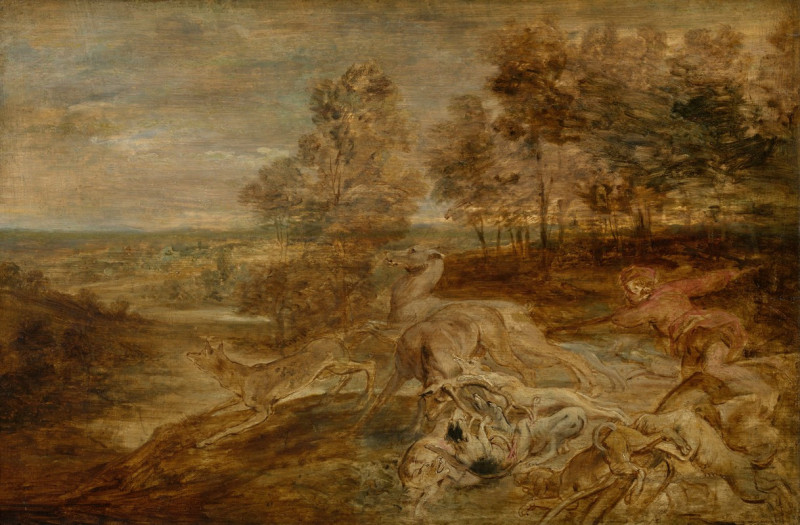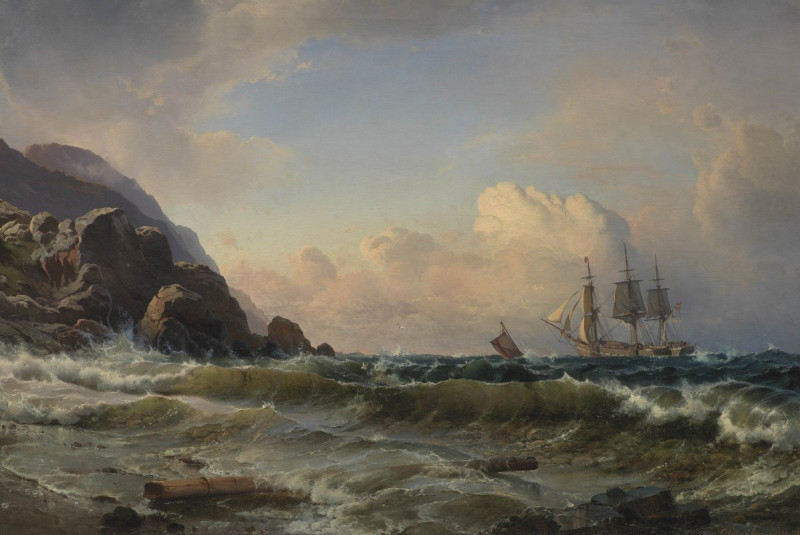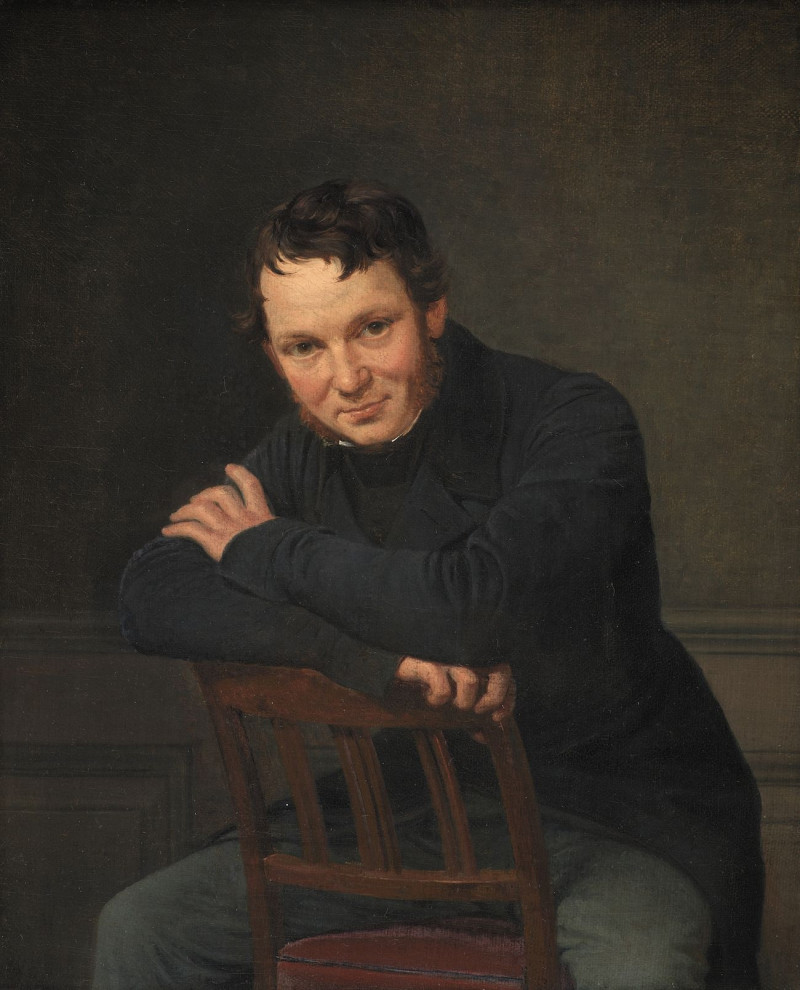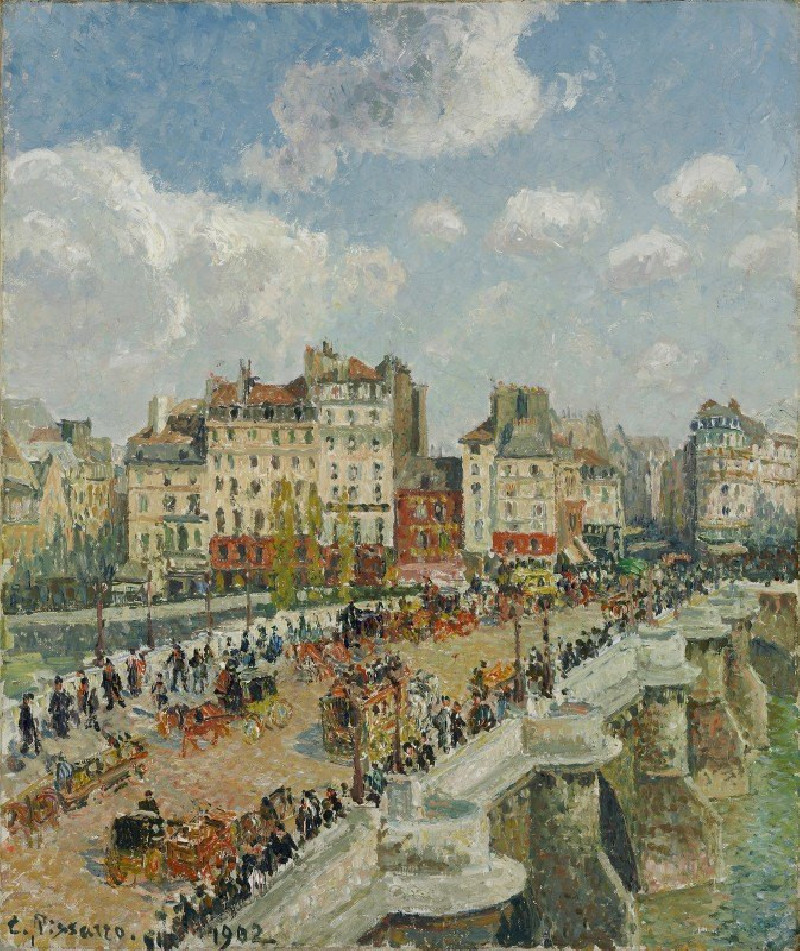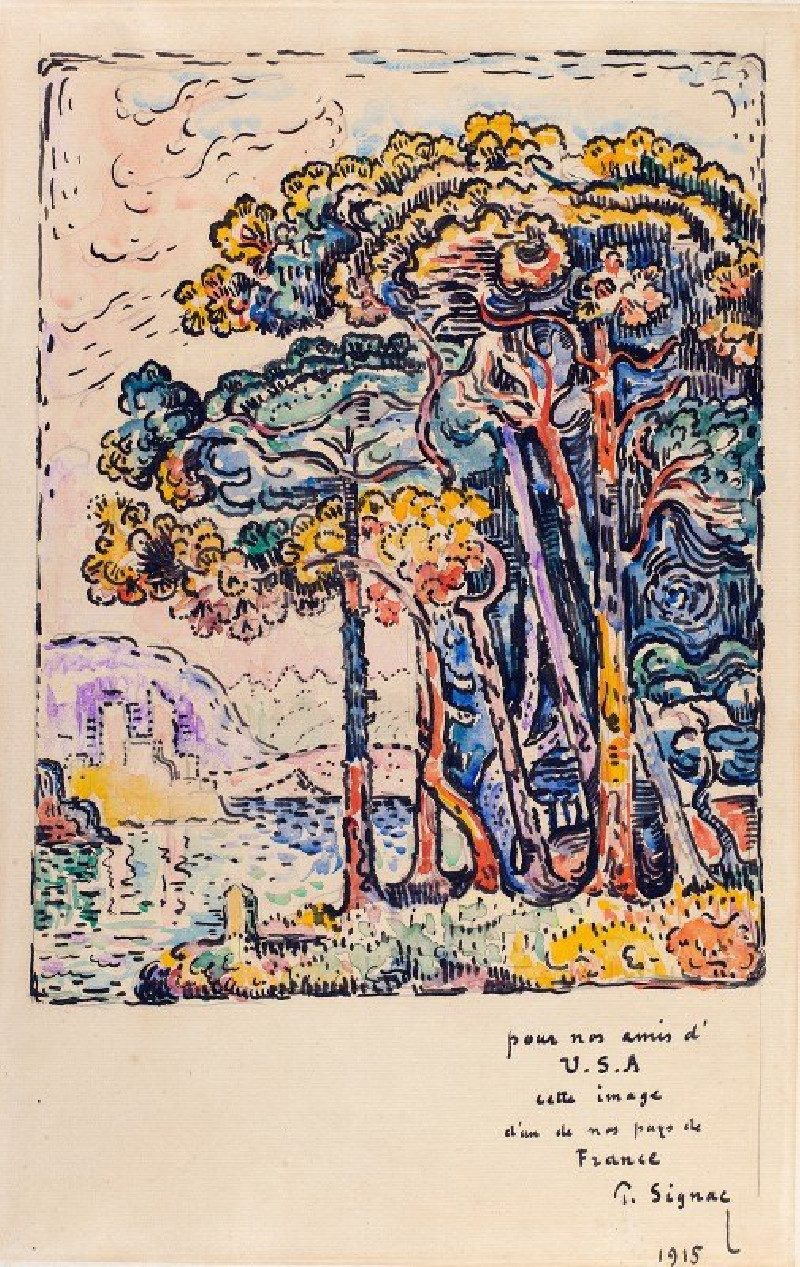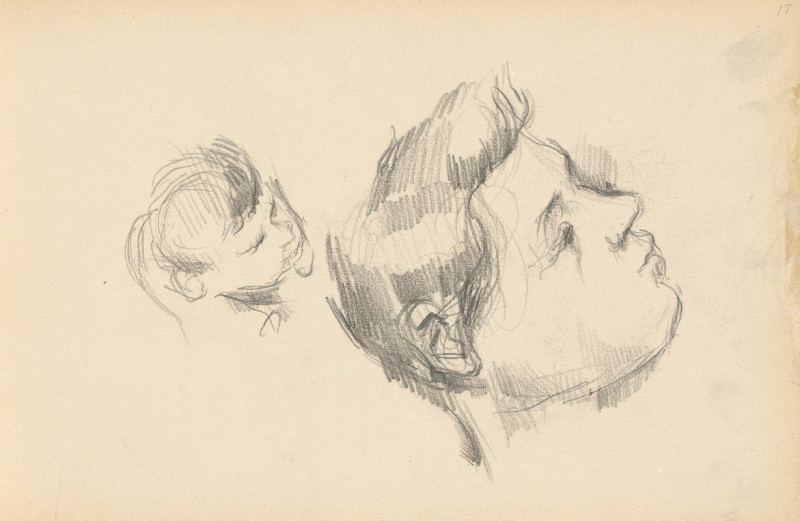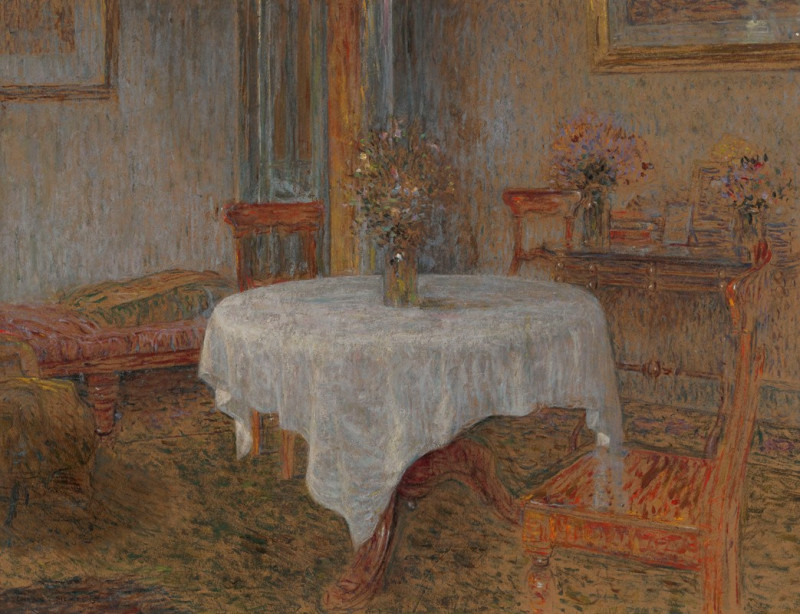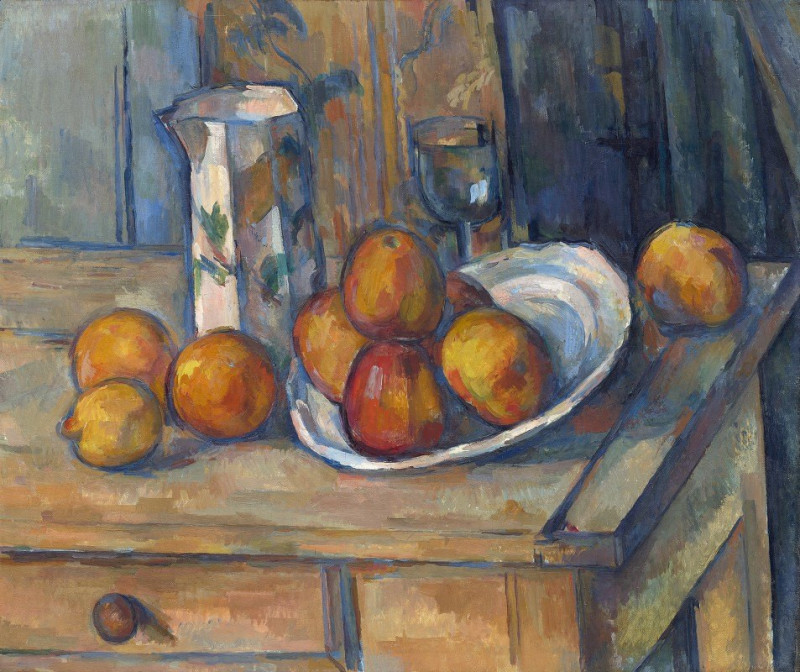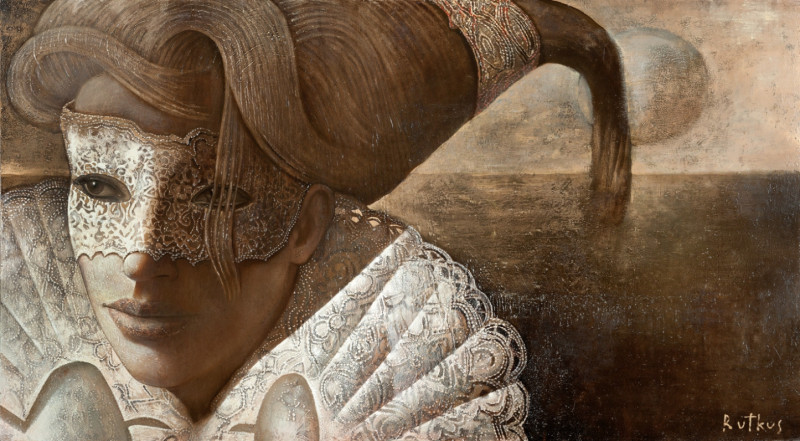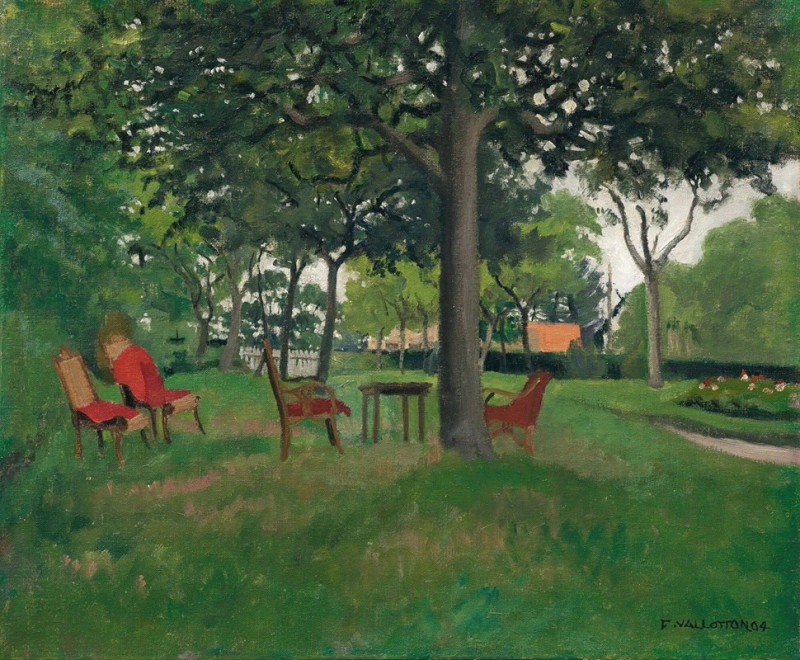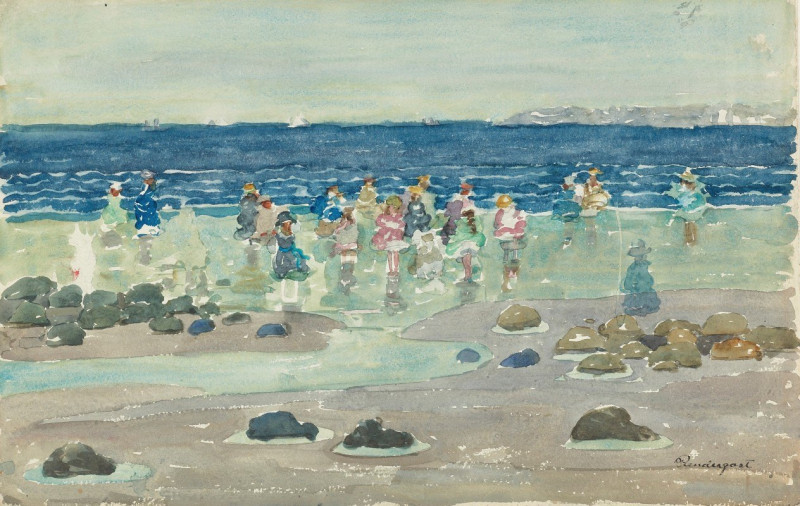Sailor’s Ball (1909)
Technique: Giclée quality print
Recommended by our customers
More about this artwork
Eugène Jansson's "Sailor’s Ball" (1909) captures the lively spirit and graceful motion of a seaside dance, enveloping its viewers in a swirl of festive energy and vivid hues. In this painting, a group of sailors and their partners, dressed in the traditional navy blue and white uniforms and gowns respectively, fill the dance floor under a colorful canopy of flags.The eye is drawn to the center of the painting where a sailor and a woman in a flowing blue dress share a dance. The artist uses bold strokes and swirling patterns to convey the movement of the dance, with the woman’s skirt capturing the rhythm and flow of the music. The attendees are portrayed with an impressionistic style that focuses on motion and emotion over strict realism. The environment is filled with the dance's dynamism, the dancers almost seeming to move right off the canvas.Jansson’s use of light and shadow, alongside the vibrant yet somewhat muted color palette, particularly in the depiction of the flags above, adds a dream-like quality to the scene. The impression of festivities is rendered through the strategic use of light, accentuating the facial expressions and the fluidity of the dancers' clothing."Sailor’s Ball" not only portrays a snapshot of joyous communal interaction but also reflects the cultural and social gatherings of the early 20th century, imbued with a sense of timelessness and universality.
Delivery
Returns
Eugène Fredrik Jansson (18 March 1862, Stockholm – 15 June 1915, Skara) was a Swedish painter known for his night-time land- and cityscapes dominated by shades of blue. Towards the end of his life, from about 1904, he mainly painted male nudes. The earlier of these phases has caused him to sometimes be referred to as blåmålaren, "the blue-painter".

